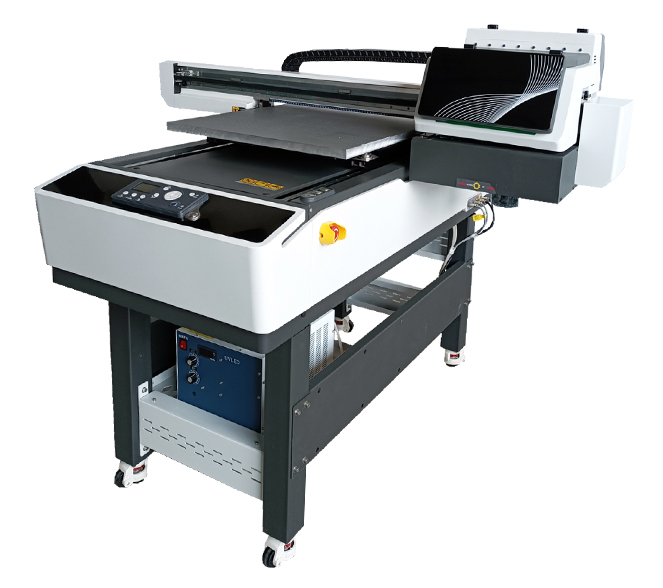Certainly! Here are some additional points about flatbed UV printers:
Versatility: Flatbed UV printers can accommodate various shapes and sizes of materials due to their flatbed design. This makes them ideal for printing on irregularly shaped objects or thick substrates.
High-resolution printing: UV printers can achieve high-resolution prints with sharp details, smooth gradients, and vibrant colors. They can reproduce intricate designs, fine text, and complex graphics accurately.
Durability: UV-curable inks used in these printers offer excellent durability and resistance to fading, scratching, and moisture. This makes them suitable for both indoor and outdoor applications.
Instant curing: UV printers use UV LED lamps to instantly cure the ink during the printing process. This allows for faster production speeds compared to traditional inkjet printers that require drying time.
Model: WK-6090 Flatbed UV Printer
Printing Width: 600*900mm (23.62″*35.43″)
Printing Media Thickness: 0-130mm(5.12″)
Print Head: Epson I1600-U1 (2pcs)
Print Color: CMYK + WW + VV
Printing Speed: 3.6 Sqm/h (6 Pass)

Eco-friendly printing: UV printing is considered more environmentally friendly compared to solvent-based printing methods. UV inks are low in volatile organic compounds (VOCs) and emit fewer harmful chemicals into the atmosphere.
Customization possibilities: Flatbed UV printers enable customization by supporting variable data printing. This means you can personalize each printed item with unique information, such as names, numbers, or QR codes.
Texture and special effects: Some UV printers offer the ability to print raised textures or special effects using multiple layers of ink. This adds depth and tactile elements to the print, enhancing its visual appeal.
Cost-effectiveness: UV printing eliminates the need for plates or screens, reducing setup costs and making it suitable for small print runs or one-off prints. It also allows for on-demand printing, reducing inventory costs.
It’s worth noting that while UV printers have a wide range of applications, some materials may require pre-treatments or coatings to ensure optimal ink adhesion and durability. Always consult the printer manufacturer’s recommendations and test materials before full-scale production.